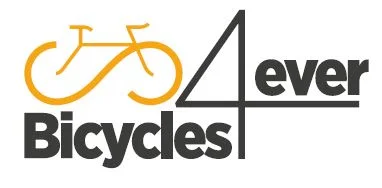How To Stop Your Legs Hurting From Cycling with GCN
Source: GCN Youtube Channel: How To Stop Your Legs Hurting From Cycling
Video How To Stop Your Legs Hurting From Cycling with Global Cycling Network
Video How To Stop Your Legs Hurting From Cycling with Global Cycling Network YouTube Channel.
How To Stop Your Legs Hurting From Cycling
Global Cycling Network: Managing Sore Legs on Your Bike Ride
Sore legs are a common affliction for cyclists, often unavoidable after a hard, challenging ride. The feeling of soreness can be discouraging and may affect your performance on subsequent rides. In this video, we will explore some tips to help you manage sore legs when out on your bike, allowing you to recover faster and get back in the saddle sooner.
Rest Days: Essential for Recovery
Rest days are crucial for allowing your muscles to recover from the strain of a tough ride. It is tempting to continue riding, especially on easy days, but it is important to truly rest your legs. Whether you opt for a full day off the bike or a very easy spin, the key is to give your muscles time to repair and rebuild. By incorporating rest days into your training schedule, you can prevent excessive soreness and maintain your performance over the long term.
Activation Exercises and Stretching: Maintaining Muscle Health
Incorporating activation exercises, core strength workouts, and stretching into your routine can help keep your muscles in top condition and reduce the likelihood of experiencing severe soreness. These exercises can improve circulation, flexibility, and muscle strength, allowing you to recover more quickly from intense rides. By including these activities in your training program, you can support the health of your muscles and minimize soreness after challenging efforts.
Post-Ride Recovery: Tools and Techniques
After a hard ride, your muscles need time to repair and recover. Utilizing tools such as foam rollers, massage balls, or visiting a physiotherapist can aid in flushing out lactic acid and reducing muscle tightness. While sports massage may not be the most pleasant experience, it can significantly improve your recovery and prevent prolonged soreness. Prioritizing post-ride recovery practices can help you bounce back faster and feel stronger on your next ride.
Warm-Up: Setting the Tone for Success
A proper warm-up is essential for preparing your body for the demands of a hard ride and reducing the risk of developing sore legs. Spending the first 10-15 minutes of your ride at an easy pace can gradually elevate your heart rate and prepare your muscles for more intense efforts. By easing into your ride and allowing your body to acclimate to the workload, you can prevent excessive fatigue and soreness later on. Incorporating a thorough warm-up routine can make a significant difference in how your legs feel during and after your ride.
Nutrition and Hydration: Fueling Your Recovery
Proper nutrition and hydration play a critical role in supporting muscle recovery and preventing fatigue and cramping. Consuming a balanced mix of carbs, protein, and fats can aid in replenishing energy stores and promoting muscle repair. For cyclists who sweat heavily, electrolyte supplements or salt tabs can help replace lost minerals and prevent dehydration. By prioritizing fueling and hydrating effectively, you can support your body’s recovery process and reduce the severity of post-ride soreness.
Gearing: Finding Your Optimal Cadence
Gearing plays a significant role in how much strain you put on your muscles during a ride. Opting for a higher cadence and avoiding overly challenging gear ratios can help reduce muscle fatigue and soreness. By focusing on efficiency and maintaining a steady cadence, you can minimize the risk of developing severe sore legs. Paying attention to your gear choices and pedaling technique can make a noticeable difference in how your legs feel during and after your rides.
In conclusion, sore legs are a common occurrence for cyclists, especially after challenging rides. By incorporating rest days, activation exercises, post-ride recovery practices, a proper warm-up, nutritional support, and gearing strategies into your training routine, you can effectively manage soreness and recover faster. Prioritizing muscle health and recovery can help you maintain consistent performance and enjoy your time on the bike to the fullest. Remember to listen to your body, adjust your training as needed, and seek professional guidance if you experience persistent soreness or discomfort. With the right approach, you can keep your legs feeling strong and ready for your next cycling adventure.
The opinions expressed in this space are the sole responsibility of the YouTube Channel Global Cycling Network and do not necessarily represent the views of Bicycles4ever Cycling Culture.

